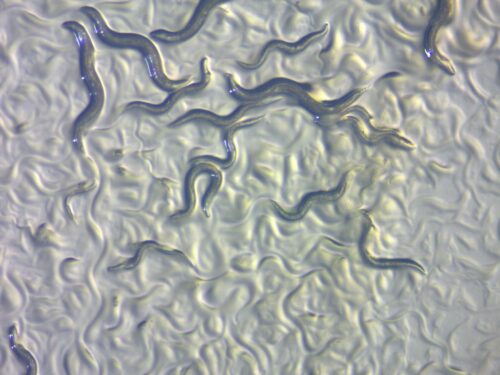Image courtesy of Flickr.
For many animals, color guides foraging decisions. In the same way a yellow inverted triangle signals us to yield or a shape outlined in red alerts us that something may be hazardous, environmental colors also help animals learn avoidance. Canonically, colors are detected and processed by specialized photoreceptors and opsin molecules in our eyes. But what about animals without eyes?
Dipon Ghosh, Yale PhD graduate and now MIT researcher, explored this question in Caenorhabditis elegans, a transparent, eyeless roundworm that typically resides in decomposing matter. When Ghosh read that harmful bacteria like those native to the worm’s environment secrete pyocyanin, a blue-pigmented toxin, he decided to test whether the worms could sense the color of the pigmented toxin. His study reported that light affected worms’ avoidance of harmful pigmented bacteria and that colors of incident light that mimic spectral properties of pigment-altered light can influence avoidance behavior in worms. In other words, worms can sense colors despite lacking eyes and opsins. “Opsin molecules were previously thought to be required for color detection,” Ghosh said. “Our work tells us that we have so much more to learn and explore about how animals sense light.”
Furthermore, Ghosh and members of the Nitabach and Horvitz laboratories at Yale and MIT identified two evolutionarily conserved genes—jkk-1 and lec-3—required for the worms’ color sensitivity. “Many discoveries made in simple organisms have unexpected parallels in human biology, with the potential for biomedical applications. Perhaps by better understanding color sensitivity in the worm, we might find similar patterns in how other organisms respond to light,” Ghosh said.
Sources:
Ghosh, D.D., Lee, D., Jin, X., Horvitz, H.R, Nitabach, M.N. (2021). C. elegans discriminates colors to guide foraging. Science, 371, 1059-1063.

